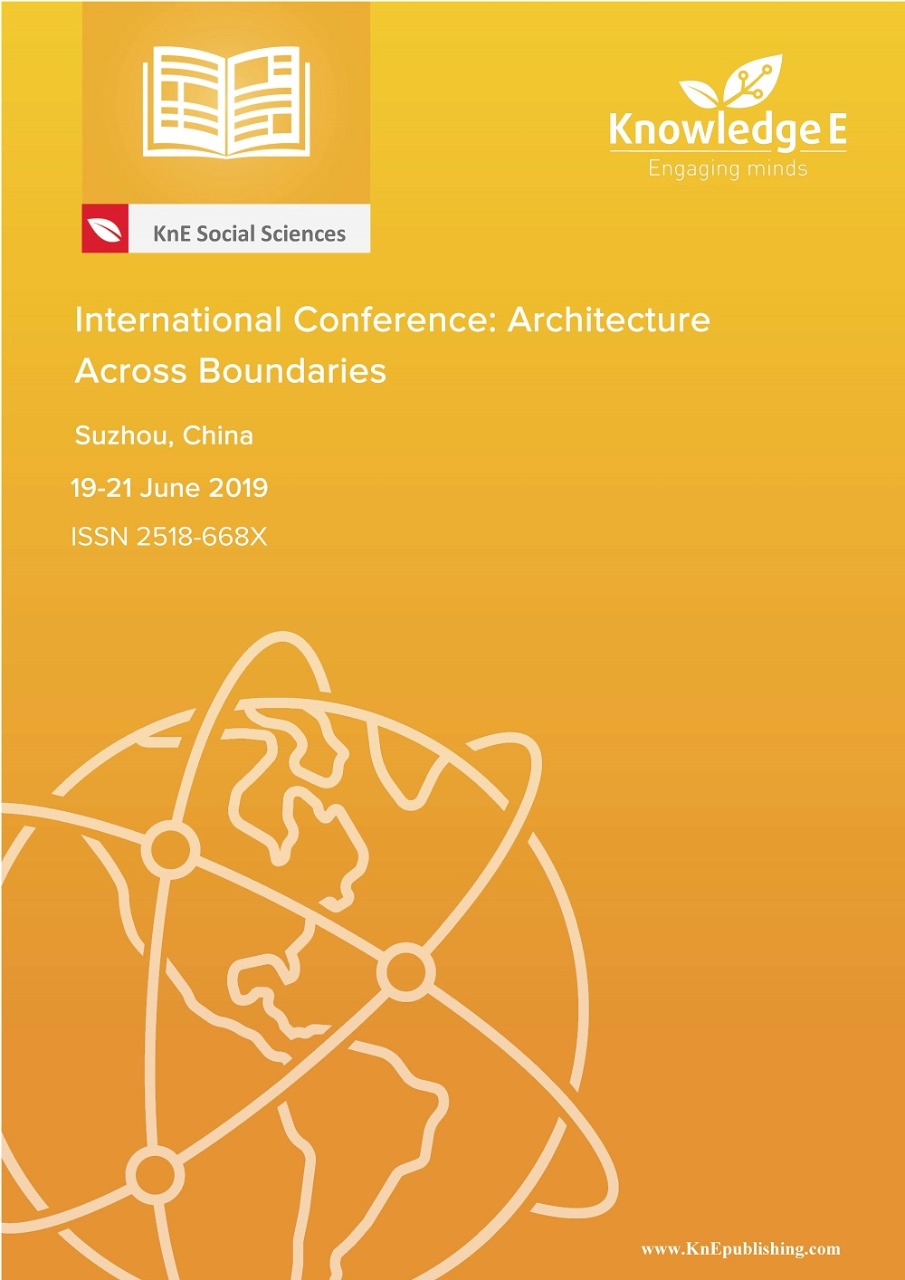Suburban Villages: Conceptualizing Urban Fringes in a Global Context. The Case of Wangzhai
DOI:
https://doi.org/10.18502/kss.v3i27.5526Abstract
Early settlements, or “Suburban Villages,” are organized along the Wenruitang water network, a millenary old canal system which structured the territory around Wenzhou. The extension of the urban boundaries from the late 1980’s onward included the rural villages along the Wenruitang in a form of diffused urbanism. Those villages became linked to create an Urban Archipelago, defining an indigenous kind of suburbs. At present, the sevillages are threatened by the constant mutating character of this suburb: the agricultural land preservation policy will preserve the diffuse urban form but puts the burden on the already built areas, i.e. the suburban villages, as the only place of redevelopment, and real estate speculation. Ourresearchprojectaimstodefinethismutatingterritoryandfocusparticularlyonthe relation between the Wenruitang water system and the settlements, within this new suburban situation. Our goal is to show the patterns of its architecture and urbanism in order to propose either a preservation and rehabilitation plan. OurfirstcasestudyisthevillageofWangzhaiinWenzhouinZhejiangProvince.Located on one branch of the Wenruitang water network, Wangzhai village is both typical and specific. As part of these Suburban Villages network, it is typical with its relation to the river, its spontaneous urban development, and its modern vernacular architecture heritage. However it is located within the boundaries of the Sino-American Wenzhou-Kean University, and is part of the planned Kean Town. The objective of our research is to examine the condition of the village in order to propose conceptual tools that might be used for design strategies.
References
Berque A. (2000) Médiance, de milieux en paysages, Paris: Belin.
Berque A. (2010), Histoire de l’habitat idéal: de l’orient vers l’occident, Paris : Le Félin
Berque, A. (2011). Le rural, le sauvage, l’urbain. Études rurales, no 187,(1), 51-61. https://www.cairn.info/ revue-etudes-rurales-2011-1-page-51.htm.
Chen F.,Thwaites K., 2012, Chinese Urban Design: The Typomorphological Approach, London and New York: Routlege
Choay F. (1965) Urbanisme, utopies et realités, une anthologie, Paris : Editions du seuil.
FlamJ.ed.(1996). Robert Smithson: The Collected Writings.Berkley:UniversityofCaliforniaPress.P91
GiovannoniG.(1931)L’UrbanismeFaceauxVillesAnciennes,MandosioJ.M.,PetitaA.TandilleC.,Trans, Paris : Editions du Seuil.
Hertweck F., Marot S. (2013) The City in the City: Berlin: A Green Archipelago, Baden: Lars Müller Publishers
Jackson J.B. (1984) Discovering the Vernacular Landscape, New Haven: Yale University Press.
Kögel E. ed. (2018) Design and Architecture, Rural Moves, Berlin: Aedes
KostofS.(1991)The City Shaped, Urban Patterns and Meanings Through History,London:Thamesand Hudson
Pinon P. (2016) Une Archéologie du Sol Urbain, in Viganò P., Mantziaras P. eds., Le Sol des Villes, Genève : Metis Presses.
Riegl A., The Modern Cult of Monuments : Its Character and Its Orgin, Foster K.W. and Ghirardo D. Trans. In Hays M. ed. (1998) Oppositions Reader, New York: Princeton Architectural Press.
Rykwert J. (2000) The Seduction of Place, The History and Future of the City, New York : Oxford University Press.
Secchi B. (2009) La Ville du Vingtième Siècle, Paris: Recherche.
Verdini G., Wang Y., Zhang X. eds. (2018) Urban China’s Rural Fringe, Actors, Dimensions and Management Challenges, London and New York: Routlege
Waldheim C., Landscape as Urbanism: A General Theory, Princeton Architectural Press, 2016

